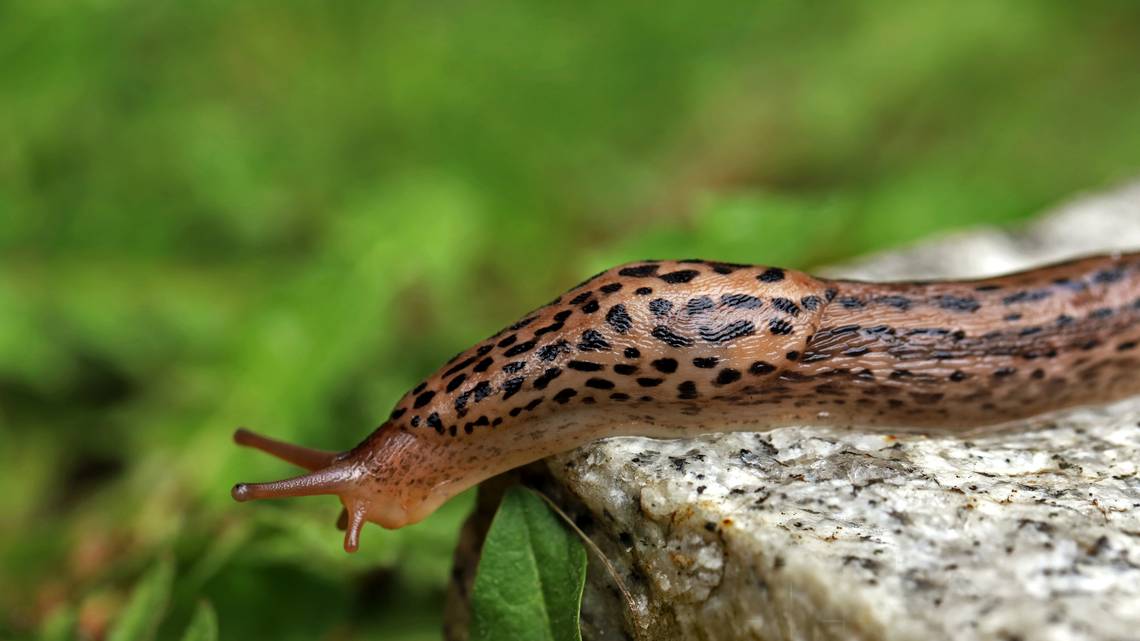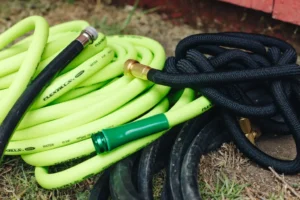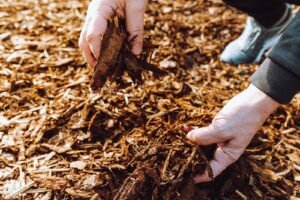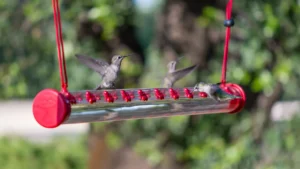Defeat Garden Slugs: Essential Strategies for Organic Control and Prevention
That telltale silvery trail across your garden beds and the mysterious disappearance of seedlings overnight can mean only one thing: slugs have discovered your garden. These soft-bodied mollusks may move slowly, but their appetites are voracious, and their ability to devastate prized plants is legendary among frustrated gardeners. Whether you’re finding holes in your hostas or watching your lettuce disappear before harvest, understanding how to effectively manage slugs is essential for maintaining a thriving garden ecosystem.
This comprehensive guide explores proven methods for identifying, preventing, and controlling slug populations using both traditional wisdom and science-backed approaches. By implementing the strategies outlined here, you’ll be able to protect your plants while maintaining ecological balance in your garden sanctuary.
Understanding Your Slimy Adversaries: Slug Biology and Behavior
Before diving into control methods, it’s important to understand what you’re dealing with. Knowledge about slug life cycles and behaviors will make your control efforts significantly more effective.
What Are Slugs?
Slugs are terrestrial mollusks closely related to snails but lacking the external shell. The most common garden slugs include:
- Garden slug (Arion hortensis): Small (up to 30mm), typically black or dark gray
- Gray field slug (Deroceras reticulatum): Light gray to cream with mottled markings
- Great gray garden slug (Limax maximus): Larger species (up to 20cm) with distinctive spots
- Banana slug (Ariolimax columbianus): Large yellow species common in Pacific Northwest
These gastropods move by contracting muscles along their “foot,” secreting mucus that reduces friction and leaves behind the characteristic slime trail that signals their presence.
Slug Life Cycle and Habits
Understanding the slug life cycle helps target control efforts at the most vulnerable stages:
- Eggs: Slugs lay clusters of spherical, translucent eggs in protected, moist soil areas. A single slug can produce 400+ eggs annually.
- Juvenile slugs: Young slugs reach reproductive maturity in just a few months under favorable conditions.
- Adults: Depending on species, slugs typically live 1-2 years but can survive longer in ideal environments.
Most slugs are hermaphrodites, possessing both male and female reproductive organs, which contributes to their prolific breeding capacity.
Slug Behavior Patterns
Slugs have specific behavioral patterns that inform effective control:
- Nocturnal activity: Most active at night and on cloudy, damp days
- Moisture dependence: Require high humidity (85%+) to prevent dehydration
- Temperature sensitivity: Most active between 50-68°F (10-20°C)
- Shelter seeking: Hide under rocks, boards, dense foliage, and mulch during dry periods
- Seasonal peaks: Population surges in spring and fall in most regions
- Dispersal range: Typically travel up to 40 feet from daytime shelter
Are Garden Slugs Dangerous?
One of the most common questions gardeners ask is whether slugs pose any danger beyond plant damage. Here’s what you should know:
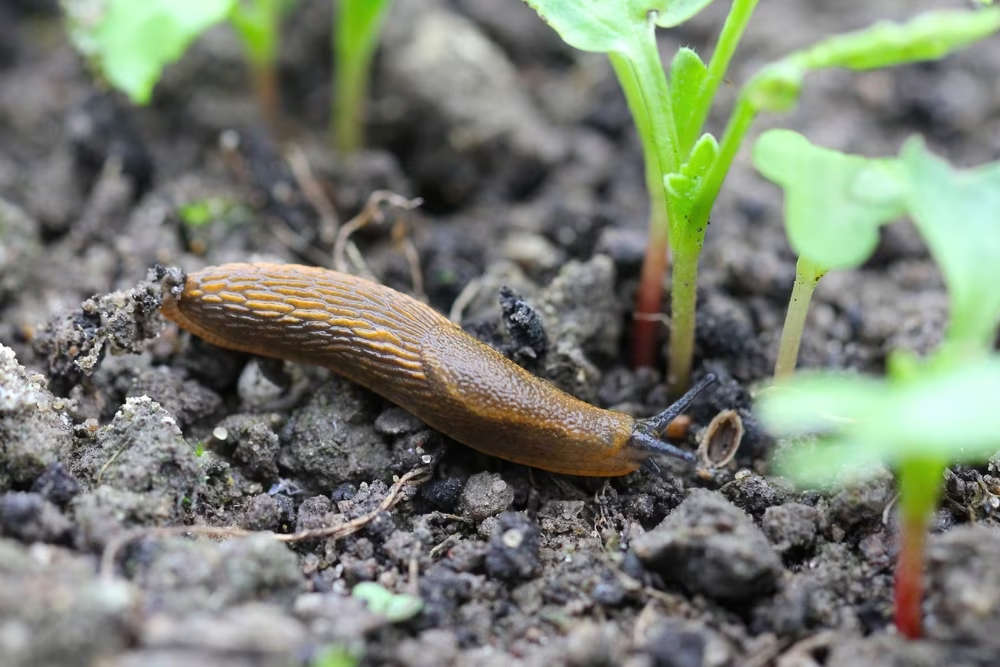
Health Considerations for Humans and Pets
For the most part, garden slugs pose minimal direct health risks to humans and most pets, but there are important exceptions:
- Parasite transmission: Some slugs can carry rat lungworm (Angiostrongylus cantonensis), which can cause eosinophilic meningitis if ingested. This is primarily a concern with unwashed produce consumption.
- Pet safety: Dogs that consume slugs treated with metaldehyde (a common commercial slug bait) can suffer serious poisoning. Even without pesticides, certain slug species may cause mild irritation if pets consume them.
- Bacterial contamination: Slug mucus can contain bacteria like E. coli, particularly when slugs traverse areas with animal waste.
Ecological Impacts
From an ecological perspective, slugs play dual roles:
- Beneficial functions: Slugs contribute to decomposition processes by breaking down dead plant material and some species consume harmful fungi.
- Destructive potential: Non-native slug species can disrupt local ecosystems by outcompeting native species and altering soil microbial communities.
Plant Damage Profile
The primary concern for gardeners remains crop damage:
- Seedling destruction: Complete consumption of emerging seedlings
- Leaf damage: Irregular holes and significant defoliation
- Fruit damage: Surface scarring and deep cavities in ripening fruits
- Below-ground feeding: Damage to roots, tubers, and bulbs
- Disease transmission: Potential vectors for plant pathogens
What Kills Slugs in Garden Environments?
When slug populations reach damaging levels, understanding your control options is essential. Here’s a breakdown of what actually works to reduce slug numbers effectively:
Natural Predators
Encouraging biodiversity is a sustainable approach to slug management:
- Birds: Ground-feeding species like thrushes, robins, and starlings consume significant numbers of slugs and eggs.
- Mammals: Hedgehogs, shrews, moles, and toads actively hunt slugs.
- Beneficial insects: Ground beetles, rove beetles, and firefly larvae prey on slugs and their eggs.
- Predatory snails: Certain carnivorous snail species like the Decollate snail (Rumina decollata) feed on other mollusks.
Creating habitat for these natural allies through diverse plantings, shallow water sources, and undisturbed areas can establish a natural control system.
Environmental Controls
Manipulating the garden environment can make it less hospitable for slugs:
- Moisture management: Watering in the morning allows soil surface to dry before nightfall, reducing slug activity periods.
- Airflow improvement: Proper plant spacing increases air circulation, creating drier micro-environments slugs avoid.
- Timing adjustments: Delaying mulch application until late spring after soil warms discourages early season slug reproduction.
- Trap crops: Planting sacrificial favorites like marigolds or lettuce away from valuable plants can concentrate slugs for easier collection.
Physical Barriers and Traps
Creating obstacles and collection devices offers chemical-free protection:
- Copper barriers: Copper strips or tape around beds or individual plants create a mild electric charge when slugs contact them with their slime.
- Abrasive materials: Diatomaceous earth, crushed eggshells, sand, or wood ash create uncomfortable surfaces slugs avoid crossing.
- Slug traps: Sunken containers of beer or fermented yeast solution attract and drown slugs.
- Manual collection: Nighttime collecting with a flashlight remains highly effective, especially after rainfall.
Commercial and Biological Controls
When other methods aren’t sufficient, commercial products may be necessary:
- Iron phosphate baits: Significantly safer alternative to metaldehyde, toxic to slugs but breaks down into soil nutrients.
- Nematode treatments: Microscopic Phasmarhabditis hermaphrodita nematodes parasitize slugs without harming other wildlife.
- Molluscicides: Chemical controls containing ferric sodium EDTA or aluminum sulfate should be used judiciously and according to label instructions.
- Garlic or wormwood sprays: Commercial or homemade botanical repellents create unpalatable conditions for slugs.
Best Ways to Get Rid of Slugs in Garden Settings
With so many options available, which approaches provide the best results with minimal environmental impact? Here’s a comprehensive strategy that combines multiple tactics for maximum effectiveness:
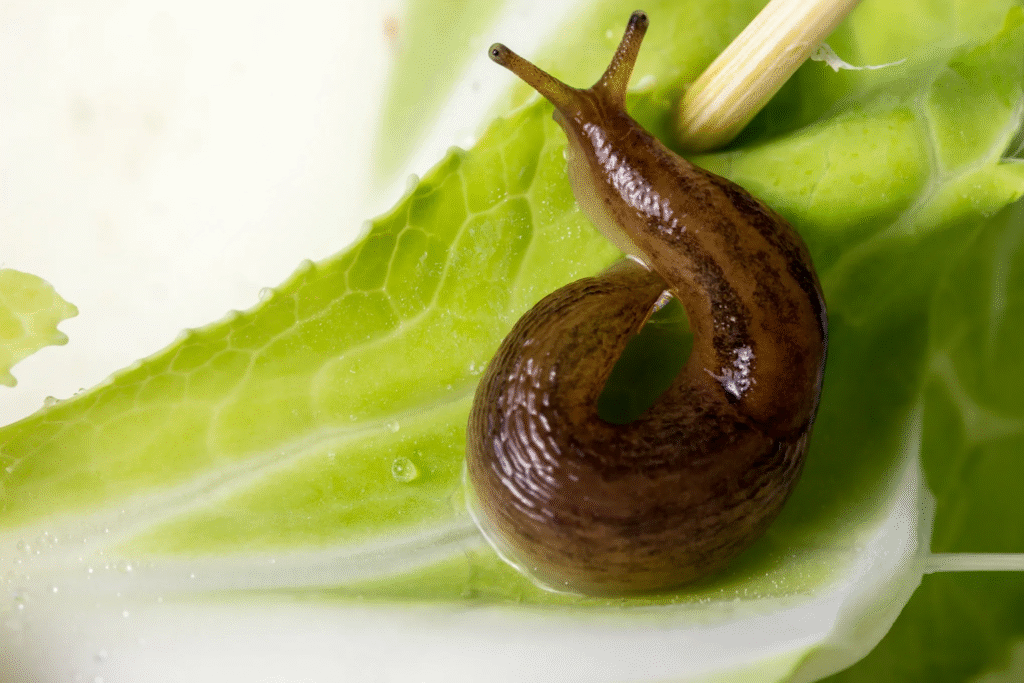
Integrated Management Approach
The most successful slug control comes from combining methods rather than relying on a single solution:
- Cultural practices (prevention)
- Bare soil cultivation in early spring to expose eggs
- Strategic timing of planting and irrigation
- Proper garden sanitation and debris management
- Barriers and deterrents (protection)
- Permanent copper barriers around raised beds
- Seasonal applications of abrasive materials
- Companion planting with slug-repellent species like rosemary, sage, or garlic
- Trapping and removal (reduction)
- Weekly deployment of beer traps during peak seasons
- Evening hand-collection after rainfall
- Board or grapefruit traps checked daily
- Targeted treatments (control)
- Spot application of iron phosphate around vulnerable plants
- Nematode application in spring when soil temperature exceeds 41°F (5°C)
Implementing a Seasonal Strategy
Timing interventions to align with slug life cycles maximizes effectiveness:
Early Spring (Prevention Focus)
- Till garden beds to expose overwintering eggs and adults
- Apply nematodes when soil warms
- Delay mulching until plants are established
- Install permanent barriers around beds
Late Spring/Early Summer (Protection Focus)
- Deploy traps at first sign of activity
- Apply copper tape around individual plant stems
- Water in morning only
- Begin evening slug hunts after rainfall
Late Summer/Fall (Reduction Focus)
- Increase trapping efforts as temperatures cool
- Apply selective iron phosphate treatments
- Remove fallen fruit and decaying material
- Prepare protected areas for fall seedlings
Winter (Planning Focus)
- Remove potential hibernation sites
- Plan resistant plant selections for spring
- Apply winter mulch away from plant crowns
- Consider winter cover crops that suppress slug populations
How to Get Rid of Slugs Naturally
For gardeners committed to organic and natural approaches, there are numerous effective strategies that avoid synthetic chemicals:
Plant Selection and Garden Design
Start with plants naturally resistant to slug damage:
- Slug-resistant plants: Ferns, ornamental grasses, shrubs with aromatic foliage, plants with fuzzy leaves or tough surfaces
- Highly susceptible plants (protect these especially): Hostas, lettuce, basil, dahlias, strawberries, seedlings of most vegetables
Design your garden with slug behavior in mind:
- Create raised beds with overhanging edges
- Include pathways of rough, crushed materials
- Plant groundcovers that don’t provide slug habitat
- Establish dedicated “slug trap” areas away from prized plants
Homemade Slug Deterrents and Traps
Natural approaches that have proven effective include:
Homemade Beer Trap
- Bury a container with rim 1″ above soil level
- Fill halfway with beer or yeast-sugar-water solution
- Cover with propped board allowing slug entry
- Check and refresh every 2-3 days
Coffee Ground Barrier
- Coffee grounds function both as abrasive barrier and mild toxin
- Apply 2″ wide band around vulnerable plants
- Reapply after heavy rain
- Used grounds from coffee shops provide inexpensive source
Citrus Traps
- Hollow out half a grapefruit or orange
- Place rind hollow-side down near affected plants
- Check each morning and remove collected slugs
- Replace when deteriorated
Herbal Repellent Spray
- Steep 3-4 cloves crushed garlic and 2 tablespoons dried wormwood in 1 quart hot water
- Let cool, strain, and add 1 teaspoon liquid soap
- Spray on soil around plants (not on edible portions)
- Reapply after rain
Natural Predator Attraction
- Install shallow dishes of water for birds and beneficial insects
- Create brush piles or rockeries for ground beetles
- Plant flowering herbs to attract parasitic wasps and flies
- Avoid pesticides that harm beneficial insects
Maintenance Practices for Slug Prevention
Regular garden maintenance significantly reduces slug habitat:
- Trim lower leaves that touch the ground
- Remove debris and fallen fruit promptly
- Prune to improve airflow between plants
- Cultivate soil surface regularly to disrupt egg clusters
- Water deeply but infrequently, allowing surface drying
- Use drip irrigation rather than overhead watering
Regional Considerations for Slug Management

Slug pressure varies dramatically by region, requiring locally adapted strategies:
Pacific Northwest and Other High-Moisture Regions
- Employ more aggressive trapping programs
- Consider larger investments in permanent copper barriers
- Focus on improving drainage in all garden areas
- Schedule regular nighttime slug hunts during peak seasons
- Emphasize resistant plant selection in vulnerable areas
Arid and Semi-Arid Regions
- Target control efforts during irrigation periods
- Focus on morning watering exclusivity
- Watch for population increases during monsoon seasons
- Emphasize mulch management to reduce moisture retention
Cold-Winter Regions
- Time soil cultivation to expose eggs before winter freeze
- Apply nematodes early in spring as soil warms
- Focus control efforts on spring population emergence
- Use season extension methods that don’t create slug habitat
Subtropical and Tropical Regions
- Implement year-round monitoring and control
- Emphasize predator diversity in garden planning
- Watch for population surges during rainy seasons
- Consider raised growing systems with integrated barriers
Case Study: Garden Transformation with Integrated Slug Management
A demonstration of successful slug management in action comes from Master Gardener Helen Richards in Oregon’s Willamette Valley, an area notorious for destructive slug populations:
The Problem
Helen’s vegetable garden suffered 70% seedling loss and significant damage to mature plants despite regular application of commercial slug baits.
The Integrated Approach
Over one growing season, Helen implemented a comprehensive strategy:
- Garden restructuring:
- Converted to raised beds with copper tape barriers
- Installed 2′ gravel pathways between beds
- Improved drainage throughout garden area
- Cultural practices:
- Switched to morning-only watering
- Delayed mulching until plants were established
- Implemented monthly soil cultivation in open areas
- Biological controls:
- Applied nematodes in early spring
- Installed bird bath and brush pile to attract predators
- Created beetle banks with perennial bunch grasses
- Monitoring and direct control:
- Scheduled twice-weekly night checks with collection
- Deployed beer traps at 6′ intervals around garden perimeter
- Used targeted iron phosphate only around most vulnerable seedlings
The Results
- First season: Seedling loss decreased from 70% to 15%
- Second season: Further reduction to under 5% loss
- Long-term: Maintenance-level control requiring minimal intervention
- Cost efficiency: Initial investment in barriers and restructuring offset by reduced plant replacement and minimal ongoing product needs
Conclusion: A Balanced Approach to Slug Management
While slugs can be frustrating garden pests, successful management doesn’t require declaring all-out chemical warfare. By understanding slug biology and implementing a diverse range of complementary strategies, you can minimize damage while maintaining ecological balance in your garden.
Remember that complete eradication is neither possible nor desirable—slugs do play a role in decomposition and nutrient cycling when their populations are kept in check. The goal should be reducing numbers below the threshold of significant damage while encouraging natural predators to establish long-term biological control.
With persistence and an integrated approach, you can transform your garden from a slug haven to a balanced ecosystem where these mollusks are just another part of the garden community rather than a destructive force. Your plants will thrive, and you’ll have the satisfaction of solving a garden challenge through knowledge and thoughtful intervention rather than chemical dependence.
